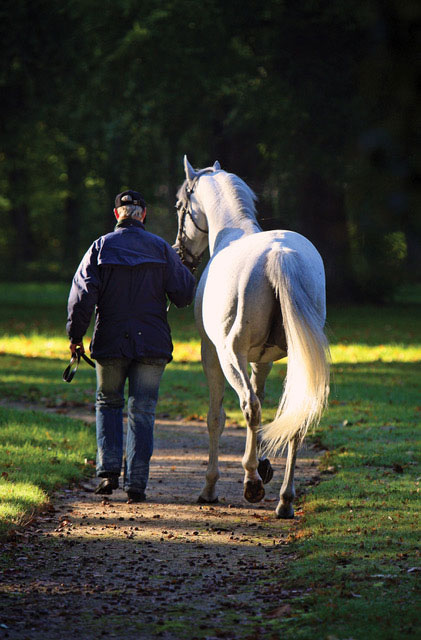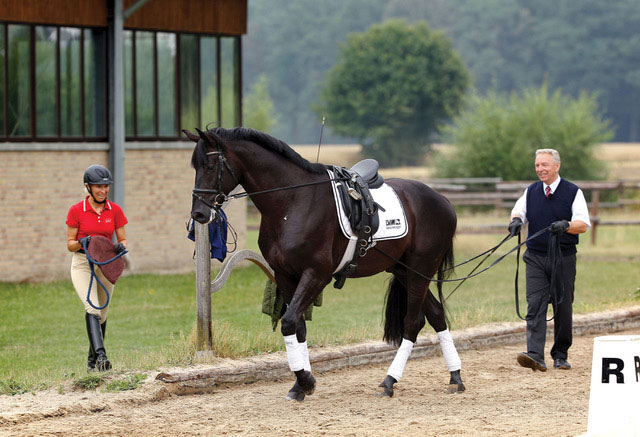
The following is an excerpt from How Two Minds Meet: The Mental Dynamics of Dressage by Beth Baumert.
Horses are herd animals, and when it comes to riding horses, the importance of this fact is often overlooked and underestimated. All successful horse and rider partnerships are based on understanding the herd mentality.
By instinct, horses are “fight-or-flight” creatures, so they need a responsible leader to protect them in the face of threats. That’s how horses are in the wild, and those inclinations are still with horses that have been domesticated. They still need a leader and they will either fight or run away in the face of danger. Although your horse may come to trust you as his leader, it will serve you well to keep his innate needs in mind.
Emotionally, horses are as innately as different as people are, or as dogs are. Some are friendly, self-assured, and trusting like a Labrador; some are scrappy like a Jack Russell Terrier; others are insecure and unreasonably fearful. But unlike dogs who love you no matter what, horses require that you earn their affection.
When horses are wronged, they certainly don’t come back for more like dogs often do. They’re closer to cats on the spectrum of showing positive emotion. They might, in fact, feel love, but they don’t express it like dogs. Horses are matter of fact when it comes to what they like and what they don’t like. They’re more apt to show their fear than their positive responses. As a trainer working on gaining their trust, you try to reverse this trend. In the face of a fearful situation, a trained horse ideally turns to his rider for direction.
Being the leader isn’t always as simple as it sounds. Some horses wander aimlessly and don’t act as if they want to follow you. Others are pushy, and don’t appear to see you as the leader, either: they invade your space and don’t seem to want to be a follower. A horse might not be safe and trustworthy; you need to find a way for him to accept your leadership so you can trust him. Trust has to go both ways.

There are many different exercises and tasks that you can do to establish trust, like teaching your horse to respect your space, playing games together, being clear with your aids, and being trustworthy yourself.
The Limits of Leadership
When a new mare came into my daughter Jennifer Baumert’s life, she was eager to listen to everything the horse had to say. She wanted to get to know the new mare, so her first time in the saddle, she asked lots of questions: “How are you? How do you feel today? What’s your opinion of this and that?” The first day went well. Despite some basic connection issues, Jennifer felt she had a great rapport with the mare. The next day, Jennifer was armed with an agenda that she felt was a positive and appropriate plan. But the mare could feel Jennifer’s determination and felt threatened. In the past, other riders hadn’t been very kind and fair leaders, so the mare was immediately concerned about her rider’s position as leader. Jennifer was surprised that the mare suddenly became defensive.
Individual horses determine the limits to your leadership, especially when it comes to mares and ponies. There is a saying, “You ask a stallion, tell a gelding, negotiate with a mare, and pray with a pony.” Some might say you submit a 10-page request form to a mare! The bottom line is that all horses are different. When, over time, Jennifer’s mare grew to trust her, she was a very willing partner, but Jennifer always respected her leadership limitations—always made small talk during the warmup to check on the mare’s basic comforts.
Mares have a reputation for being opinionated because they have a keen sense of fairness. Ones with a history of less than ideal riding are particularly guarded. It isn’t simply about gender and temperament, but about history and whether the horse is trusting or not.
Fairness and Consistency are the Keys to Trust

To be seen as trustworthy, you need to be consistent, clear, kind, and fair. This doesn’t mean you spoil your horse. Consistency and clarity require the physical skill and ability to follow the horse precisely, then to give exactly the same aids for the same request every time. This helps the horse better understand what, exactly, you are asking. This is important in all aspects of horsemanship, whether you are working with your horse on the ground or under saddle.
How Two Minds Meet: The Mental Dynamics of Dressage
BUY NOW on Amazon
Paperback | Kindle
This excerpt from How Two Minds Meet: The Mental Dynamics of Dressage is reprinted with permission from Trafalgar Square Books. Visit them online at Horse & Rider Books. All photos courtesy of Horse & Rider Books.
There a more really interesting books on riding and all aspects of equestrian living in our section on Books.

































